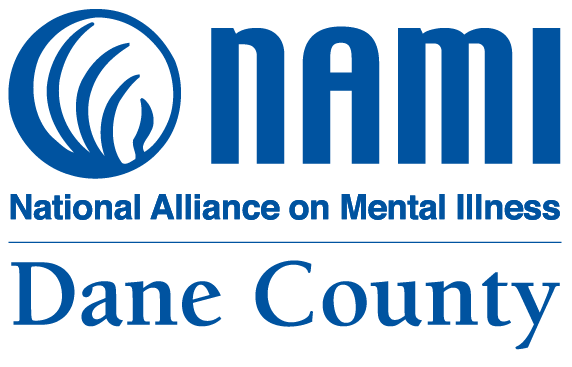Co-Occurring Disorders: Anxiety Disorders and Alcohol Use Disorder
Anxiety Disorders And Alcohol Abuse
Anxiety disorders and alcohol abuse often occur together in the same individual. This co-occurrence is referred to as dual-diagnosis.
Anxiety can be the reason many people resort to drinking excessive amounts of alcohol. People may also experience increased levels of anxiety during and after consuming alcohol.
Those with an anxiety disorder are two to three times more likely to have an alcohol or other substance abuse disorder at some point in their lives, compared to the general population.
Different Types Of Anxiety Disorders
Although anxiety is a widely used term today, there are several types of anxiety disorders which may become problematic if left untreated. The biggest cause for concern with untreated anxiety disorders is that people may choose to self-medicate with alcohol or other substances.
Common types of anxiety disorders include:
Generalized Anxiety Disorder
Generalized anxiety disorder is defined by a constant level of stress during day-to-day activities. This type of anxiety can even affect someone who stays home most of the time. Common developments with this type of anxiety disorder can also include phobias or irrational fears which are connected to what triggers the individuals disorder.
Social Anxiety Disorder
As the name suggests, social anxiety disorder is a chronic anxiety felt when dealing with social settings. Social anxiety disorder is more than being shy, which many may confuse with this specific disorder. An actual physical sickness occurs when someone anticipates or is involved in a social setting they are uncomfortable with.
Phobias that commonly occur with social anxiety include agoraphobia, which often causes anxiety to occur in public places. Individuals with this disorder may begin imagining horrible things happening to them if they are unable to get home, ranging from people disliking them to something potentially happening at home while they’re not there, like a fire.
Panic Disorder
Panic disorders are commonly defined by severe, recurring fears or anxiety attacks. These attacks happen so frequently that those with panic disorder are often anticipating the next one. Panic attacks can result in sweating, pounding heart, shaking, choking, shortness of breath, or sense of impending doom. Intense panic attacks can even mimic heart attacks, in some scenarios.
Obsessive-Compulsive Disorder (OCD)
OCD can sometimes be considered an anxiety disorder. Obsessive-compulsive disorder is defined by common compulsions or fears individuals may have. These compulsions can become so disruptive that they may interfere with other aspects of life, like responsibilities or activities, and cause significant stress.
Post-Traumatic Stress Disorder (PTSD)
In some cases, PTSD can also be considered a type of anxiety disorder. After a traumatic experience, it is common for individuals to experience helplessness, suicidal thoughts, aggression, self-harm, depression, and anxiety. Individuals who struggle with PTSD can endure hallucinations, nightmares, and flashbacks.
Alcohol Abuse Spectrum
Moderate alcohol consumption is typically no cause for concern for many people. A glass of wine with dinner or a few drinks during a night out with friends is considered completely normal. However, individuals with anxiety disorders many find that alcohol and other substances can make their anxiety symptoms worse.
When someone’s drinking becomes a severe enough problem, they are given a medical diagnosis of “alcohol use disorder,” or AUD. To be diagnosed with an AUD, individuals must meet the following criteria:
experience times when they drank more or longer than intended
drink more than four times a week
consume five or more alcoholic drinks in a day
try to cut back or stop drinking, but can’t
spend a lot of time drinking or being sick afterwards
continue to drink even though it is causing issues with family or friends
experience cravings or a strong need or urge to drink
have feelings of guilt or remorse after drinking
Anxiety And Alcohol Disorders: Which Comes First?
People with anxiety disorders who also abuse alcohol often get caught in a self-destructive loop, making it difficult to tell which disorder occurred first. The symptoms of one disorder can worsen the symptoms of the other.
An anxiety disorder may cause individuals to self-medicate with alcohol in an attempt to alleviate anxiety symptoms. Generally speaking, alcohol abuse typically develops after the onset of an anxiety disorder. Oftentimes, however, consuming alcohol can cause an increase in anxiety symptoms.
Consequences of abusing alcohol while also suffering from an anxiety disorder can include: driving while intoxicated, skipping out on regular responsibilities, and becoming addicted to alcohol.
Finding Integrated Treatment For Co-Occurring Disorders
When someone struggles with anxiety and an alcohol disorder at once, it is also referred to as comorbidity. Individuals who are diagnosed with comorbid conditions will benefit most from integrated treatment, which helps them address the symptoms of both disorders simultaneously.
This type of treatment is important because if one disorder is not fully addressed, the odds of both disorders reoccurring are increased. However, once both conditions are adequately addressed, individuals can learn to take control of their lives once again.
Sources:
Alcohol Research—Anxiety and Alcohol Use Disorders Comorbidity and Treatment Considerations
Anxiety And Depression Associates Of America—Substance Use Disorders
National Institute on Alcohol Abuse and Alcoholism—Alcohol Use Disorder
